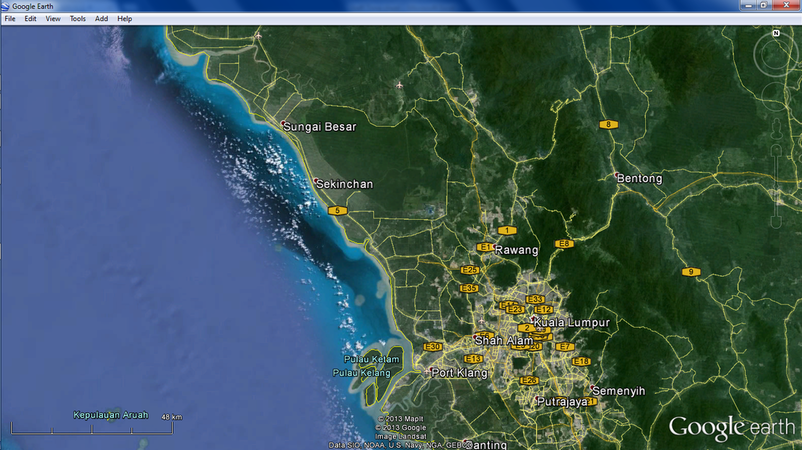MNS FLYWAY CAMPAIGN FRAMEWORK MNS launched the Flyway Campaign during the World Wetlands Day (WWD) 2013 celebration on 2nd February 2013, which is a long-term initiative which collaborations and partnerships with all levels of government and local communities to safeguard the regionally important wetlands following the principles of wise use of wetlands. |

Every year for over 50 million migratory waterbirds with at least 250 types and 28 endangered bird species from East Asia crossing over the ASEAN to Australasia & New Zealand. This link is called the EAA Flyway or bird flight path. This important strip of productive wetlands provides food energy and rest to continue the various phases of the journey. Therefore the international cooperation on the Flyway protection or provision is very important, where Malaysia is one of the vital link.
THREATS TO THE NCSC IBA
The demand for coastal land, erosion, sand mining, pollutions, poaching, feral dogs, wildlife-human conflict, bund construction are challenges in the Flyway conservation. Recent upstream pollution has caused a drop in cockle yields at the mudflats. This Kapar Power Station’s ash pond is slated to be closed in the near future which will reduce the roosting and feeding sites of the migratory shorebirds. Low awareness among the communities will be the most challenging but may probably be the most effective if successfully tackled.
MNS CONSERVATION WORK IN NCSC IBA
Conservation work along at NCSC IBA had started way back in the 1980s, with earlier bird banding works by the Wildlife Department and MNS. In 1987, the lobby for the protection of Kuala Selangor Nature Park and the protection of congregating fireflies in Sungai Selangor, which was finally gazetted in 2009.
COMPONENT
The medium term (5 year) project is divided into four main components namely:
COMPONENT 1: DEVELOPMENT OF THE SECOND FLYWAY SITE OF MALAYSIA
COMPONENT 2: RESTORING THE COASTAL MANGROVES OF THE FLYWAY
COMPONENT 3: DEVELOPING KSNP AS A WETLANDS CENTER FOR CEPA AND RAMSAR SITE
COMPONENT 4: CAPACITY BUILDING THE KSNP MANAGEMENT AND CEPA FACILITATORS
OUTPUTS
The outputs would be:
1. Second Flyway Site in Malaysia
2. Working stakeholders committee
3. Community support groups
4. Restored degraded/damaged mangroves at the NCSC.
5. Multi restored high-tide roost for migratory waterbirds
6. First Ramsar site in Selangor
7. A wetlands training center for CEPA
8. KSNP center of excellence
Copyright © Malaysian Nature Society (MNS) - Persatuan Pencinta Alam Malaysia 2025
Adding {{itemName}} to cart
Added {{itemName}} to cart